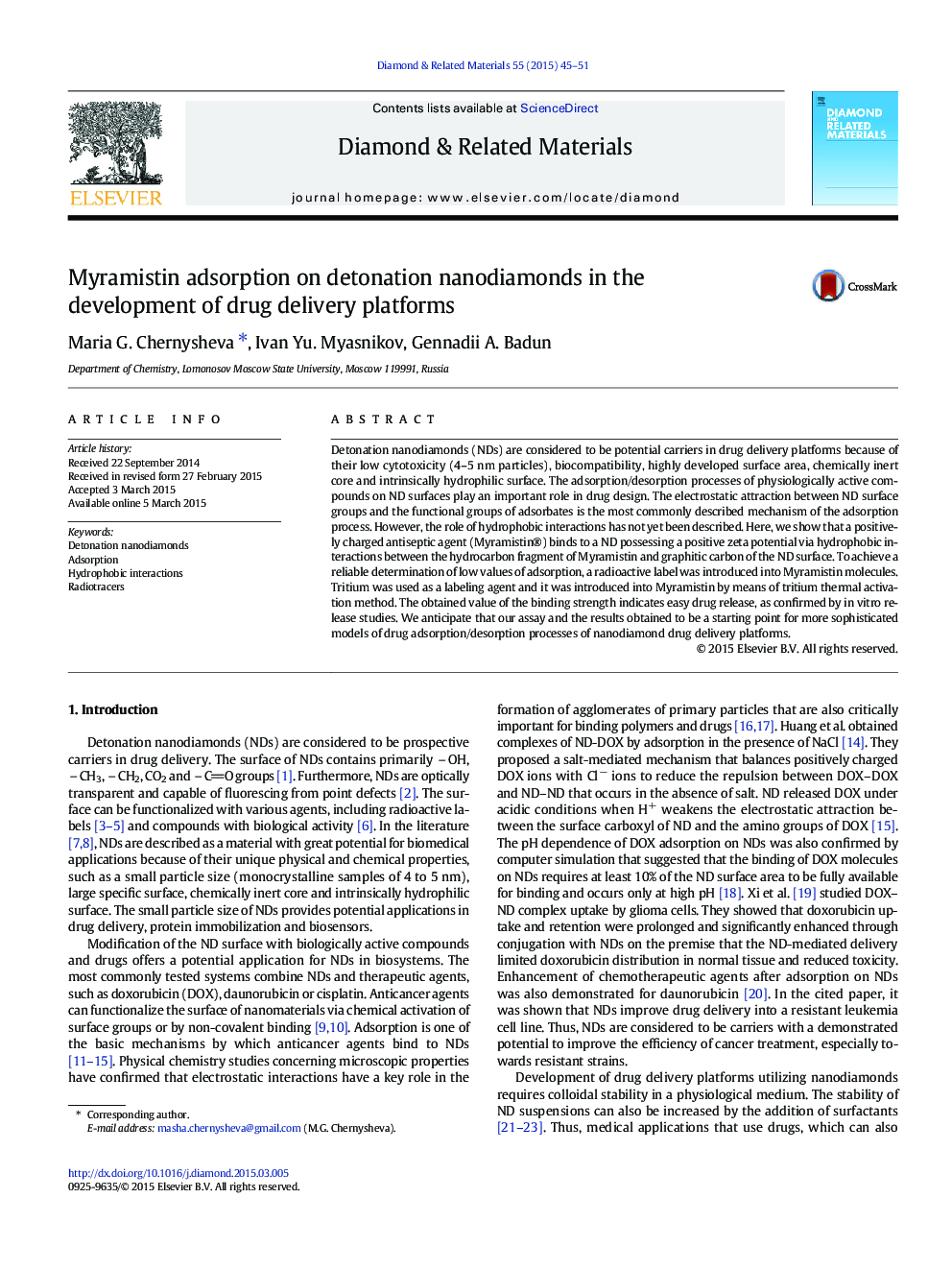| Article ID | Journal | Published Year | Pages | File Type |
|---|---|---|---|---|
| 700670 | Diamond and Related Materials | 2015 | 7 Pages |
•Nanodiamonds (NDs) were used as sorbents for antiseptic agent Myramistin.•The role of hydrophobic interactions between ND and adsorbate was analyzed.•Langmuir type of adsorption was observed upto critical micelle concentration.•Myramistin desorption from ND surface was observed in the albumin solution.
Detonation nanodiamonds (NDs) are considered to be potential carriers in drug delivery platforms because of their low cytotoxicity (4–5 nm particles), biocompatibility, highly developed surface area, chemically inert core and intrinsically hydrophilic surface. The adsorption/desorption processes of physiologically active compounds on ND surfaces play an important role in drug design. The electrostatic attraction between ND surface groups and the functional groups of adsorbates is the most commonly described mechanism of the adsorption process. However, the role of hydrophobic interactions has not yet been described. Here, we show that a positively charged antiseptic agent (Myramistin®) binds to a ND possessing a positive zeta potential via hydrophobic interactions between the hydrocarbon fragment of Myramistin and graphitic carbon of the ND surface. To achieve a reliable determination of low values of adsorption, a radioactive label was introduced into Myramistin molecules. Tritium was used as a labeling agent and it was introduced into Myramistin by means of tritium thermal activation method. The obtained value of the binding strength indicates easy drug release, as confirmed by in vitro release studies. We anticipate that our assay and the results obtained to be a starting point for more sophisticated models of drug adsorption/desorption processes of nanodiamond drug delivery platforms.
Graphical abstractFigure optionsDownload full-size imageDownload as PowerPoint slide
